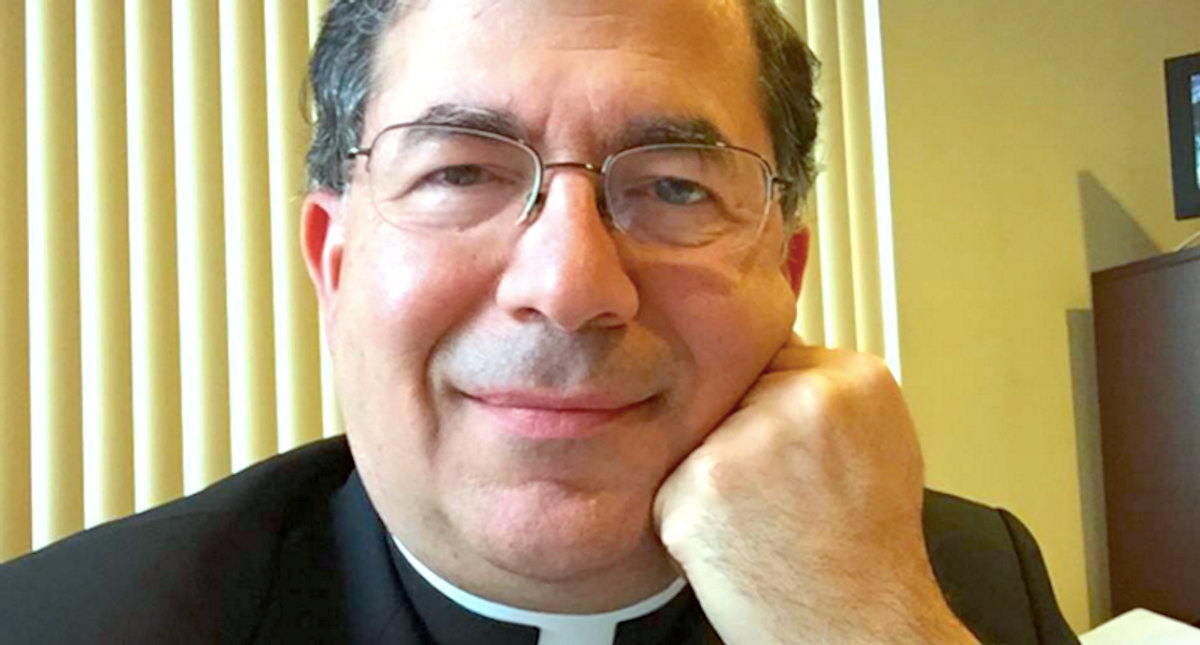Thom Hartmann
February 27, 2023

Photo by Russell Ferrer on Unsplash
Mifepristone, the abortion and miscarriage drug that is used in over half of all US abortions and routinely given to women having miscarriages to prevent complications, may well be functionally outlawed this week by a federal judge in Texas who’s been a Christian activist his entire life.
Michael Kacsmaryk, 45, was appointed to the federal bench by Donald Trump. A Republican activist and religious fundamentalist, he’s said that “so-called marriage equality” has put America “on a road to potential tyranny” and reflects a “complete abuse of rule of law principles.”
As The Washington Post noted this weekend, Kacsmaryk has argued that:
“The sexual revolution ushered in a world where an individual is ‘an autonomous blob of Silly Putty unconstrained by nature or biology’ and where ‘marriage, sexuality, gender identity and even the unborn child must yield to the erotic desires of liberated adults.’”
Now an advocacy group that, according to Ms Magazine, includes the attorney/wife of Senator Josh Hawley, has brought a lawsuit to outlaw Mifepristone in the one specific Texas federal judicial district where Kacsmaryk — and Kacsmaryk alone — sits in judgement.
As a federal judge, however, his ruling will affect the entire United States.
This part of the anti-abortion crusade is clearly not about whether Mifepristone is a dangerous drug that needs more aggressive regulation.
The drug has been used millions of times in the US and around the world and is literally safer than Tylenol. It’s been approved for use in the US for over 20 years, first for helping women struggling with incomplete miscarriages and later combined with a second drug to safely, quickly induce early-stage abortion.
And outlawing Mifepristone is not just to reduce the number of abortions, as much as the people bringing this lawsuit proclaim that’s their goal.
If reducing the number of abortions was their singular and primary goal, they’d be putting much of their time, effort, and money into sex education, birth control, universal healthcare (particularly for fertility-age women), and government support for low-income families with children. Instead, most in the forced birth movement oppose all of those things.
No, this is part of a much larger effort. Because their “beliefs” are grounded in their religion and they believe that women who get abortions are committing the ultimate sin: murder. Therefore, they want to actually see these sinning women suffer.
Like people who love the death penalty (and in two states now state legislators have called for the death penalty for women who get abortions), they want to be able to torture them and watch them suffer; they want them to experience humiliation, and feel mortification for their sin of rejecting a pregnancy initiated by a man and ordained by their god.
Torturing women for religious reasons is nothing new for American theological zealots.
Louise and I used to live just a short drive from Dover, New Hampshire, the fourth-largest city in the state, near the Maine border and the Atlantic seacoast. Generations ago, rightwing politicians and preachers were enforcing social control, much like the forced birthers are trying to do today.
John Greenleaf Whittier’s poem “How the Women Went from Dover” tells the tale of three young women who dared to challenge that day’s most powerful religious men, that early generation of the people driving the most extreme parts of what today has morphed into the forced birth movement.
Whittier’s poem begins:
The tossing spray of Cocheco’s fall
Hardened to ice on its rocky wall,
As through Dover town in the chill, gray dawn,
Three women passed, at the cart-tail drawn!
The three women were Anne Coleman, Mary Tomkins, and Alice Ambrose, and their crime was adhering to and promoting female-tolerant Quaker beliefs in a rabidly rightwing town.
This so enraged the minister of Dover’s Congregational church, John Reyner, that he and church elder Reverend Hatevil Nutter (yes, that was his real name) lobbied the crown magistrate, Captain Richard Walderne, to have them punished for their challenge to Reyner’s and Nutter’s authority.
It was a bitter New England winter when Walderne complied, ordering the three women stripped naked and tied to the back of a horse-drawn cart by their wrists, then dragged through town while receiving ten lashes each.
As Whittier wrote:
Bared to the waist, for the north wind’s grip
And keener sting of the constable’s whip,
The blood that followed each hissing blow
Froze as it sprinkled the winter snow.
A local man, George Bishop, wrote at the time:
“Deputy Waldron caused these women to be stripped naked from the middle upwards, and tied to a cart, and after a while cruelly whipped them, whilst the priest stood and looked and laughed at it.”
It was a start, from Reverend Reyner’s point of view, but hardly enough to scare the women of the entire region from which he drew his congregation. So, he got the young women’s punishment extended to 11 nearby towns over 80 miles of snow-covered roads, all following the same routine.
So into the forest they held their way,
By winding river and frost-rimmed bay,
Over wind-swept hills that felt the beat
Of the winter sea at their icy feet.
The next town was Hampton, where the constable decided that just baring them above the waist wasn’t enough. As Sewall’s History of the Quakers records:
“So he stripped them, and then stood trembling whip in hand, and so he did the execution. Then he carried them to Salisbury through the dirt and the snow half the leg deep; and here they were whipped again.”
Once more the torturing whip was swung,
Once more keen lashes the bare flesh stung.
“Oh, spare! they are bleeding!” a little maid cried,
And covered her face the sight to hide.
Whipping, beating, stoning, hanging, nailing, being pilloried (publicly clamped to a post through neck and wrist holes, often naked and sometimes for days at a time), dragging, burning, branding, and dozens of other techniques were employed by religious and government authorities in the early American colonies to enforce religious thought and behavior, particularly against women.
If her cry from the whipping-post and jail
Pierced sharp as the Kenite’s driven nail,
O woman, at ease in these happier days,
Forbear to judge of thy sister’s ways!
For the entirety of “civilized” human history — in country after country, culture after culture, religion after religion — crusaders for Zeus, Ra, Thor, Odin, Aphrodite, Venus, JHWH, Shiva, Rama, Krishna, Jesus, Quetzalcoatl, Mohamed, Ceridwen, Xpiacoc, Ishtar, and Amen (among hundreds of others) have, at various times, punished, tortured, and even killed women who refused to acknowledge their gods and the rules of their religions.
— Adherents to radical Islam from Saudi Arabia to Afghanistan to The Philippines today require women to cover most all of their bodies, and delight in publicly whipping and even beheading females who won’t comply.
— Fundamentalist Hindus in India today burn women to death if they’ve defied religious authorities or the patriarchs of their families.
— For over 1000 years, Christian fundamentalists have — as Whittier documents — tortured, hung, impaled, and burned to death women who defied their ministers’ religious mandates.
What we’re seeing today in these attempts to regulate women’s behavior by the radical fringe of the forced birth movement is a simple extension of religious fundamentalism and patriarchy that goes back as far as ancient Samaria.
And the sadism associated with it is nothing new either.
“Sadism?” you may say. It’s a strong word. But consider the long game they’re playing here in this effort to outlaw Mifepristone.
If medication abortions — which can be done quietly and privately at home, as are the majority of those brought about by Mifepristone — are no longer available, women will be forced to show up in person at clinics where surgical abortions are performed.
They’ll find themselves in public, on display, directly exposed to religious fanatics just like in Whittier’s Women From Dover.
They’ll be forced to enter a public building, where these religious freaks can set up a gauntlet the women must run to get into and out of the clinic.
— The zealots can then scream at them, curse them, photograph them, video them, follow them home.
— They can then photograph the women’s license plates; publish their names, addresses, and telephone numbers; harass them.
— They can then use social media to invite hordes of fellow fundamentalists — along with random misogynists, incels, and militia members — to stalk and terrorize them.
— They can call them repeatedly, email them, stake out their homes, all to gleefully torment them.
That’s what’s really going on here. For the zealots in the most extreme parts of the forced birth movement — which has largely taken control of the GOP — it’s all about the punishment.
Far too many of these people appear to be religiously motivated sadists.
Some hate women who try to have the same agency over their own bodies that men claim. But the most aggressive are the ones who are offended when women reject their extreme religious belief that fully human life exists at conception rather than viability.
Many of these extremists leap at a chance to inflict pain on those who reject their religious mandates, just like Hatevil Nutter did back in the day. Particularly when it is women who are asserting their own authority and agency.
It’s estimated that between 5 and 20 percent of all Americans are sadists or have sadistic tendencies, depending on how tightly defined the term is. Even if forced-birth sadistic religious zealots represent only a small percentage of our nation, it would add up to millions of people.
This is not a male or female thing, at least with regard to the most zealous movement activists. It’s a religion and sadism thing.
Although most of the high-profile leaders, fundraisers, politicians, litigators, and power brokers in the forced birth movement have been and continue to be men, this lust for domination is more about wielding religious power than it is about the gender of the people running it.
Again, this is nothing new. It’s really an ancient story that keeps echoing through history.
There was no shortage of men or women to work in the concentration and death camps in Germany in the 1930s and ’40s. Many of those Christians volunteered to be part of Hitler’s elite corps just so they could destroy the Jews and homosexuals “who’d rejected Jesus.”
They loved being in the shadow of Hitler, the big man, the famous guy, doing his work, wearing his logos. Inflicting pain on their religious enemies. Owning the German libs after their Fuehrer had declared Christianity the official religion of Germany, declared homosexuality evil, and proclaimed Judaism the enemy of Christianity. And, ultimately, they delighted in sending nonbelievers and non-compliers to prison or their deaths.
Here in America today, it’s part of a larger war on “uppity women,” non-whites, non-fundamentalist-Christian people, and gender minorities.
It’s why Ron DeSantis just introduced legislation to ban Gender Studies in colleges across Florida.
Gender Studies examines the role women play in society, from the workplace to the home to power in every dimension of American life: this goes way beyond “Don’t Say Gay.”
Which is why it’s so clear that outlawing abortion pills, for many of today’s extremists, is not about the safety of women. It’s not even about reducing the number of abortions.
It’s about control, power, and their assertion that an angry Christian god has told them they are uniquely suited to interpret his scripture. They, and they alone, can choose to embrace the punitive parts of Christianity and ignore the empathetic and loving parts of it.
For example, in the Mississippi state legislature last week Republicans would not even allow a debate on a Democratic amendment to an anti-abortion bill that would provide help for poor women who are pregnant. They want to punish women who get an abortion, but literally blocked a discussion about offering medical or financial support to low-income women for the child’s first year.
This is not to say that all or even most of the men and women in the anti-abortion movement are sadists or religious fanatics. Many are even Democrats: there’s a pro-life group called Democrats for Life that is active in helping women avoid abortion and argues for medical and financial support during pregnancy.
I know several “pro-life” people who contribute to or volunteer for adoption programs, show up to help with births, or raise money to buy diapers and baby food for low-income women. Others work to fund birth control programs and push for legislation making both sex education and contraception more widely available.
Many who work to discourage women from getting abortions are simply following the dictates of their religious leaders, particularly the Catholics among them. They believe they’re “on the side of life,” and their belief is sincere.
But those people are not, by and large, the radicals funding efforts to outlaw a drug that is safer than Tylenol.
They’re not the ones who want to force women to walk a sidewalk lined with shouting, jeering, spitting crusaders.
Those are an entirely different type of cat.
Those sadists want to shame women who’ve rejected their religious beliefs and gone on to get abortions. Who have defied their religious authority.
They want to publicly humiliate them, harass them, and teach them a lesson.
And, if this or another effort to outlaw Mifepristone succeeds, they’ll be able to gleefully do it — like Reverend Nutter — under the sanction and protection of the law.
SPEAKING OF DE SADE AND RELIGIOUS OPPRESSION OF WOMEN ONE COULD READ HIS WORK JUSTINE












